Keeping your head above water: The aftermath of the Louisiana floods
The tireless efforts of the Cajun Navy alongside countless veterinary volunteers from LSU and beyond keep hope afloat for the people and animals affected by historic Louisiana flooding.
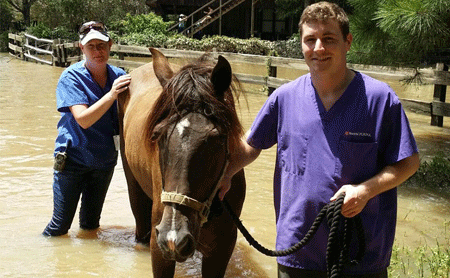
Associate professor of equine surgery Laura Riggs, DVM, PhD, DACVS, helps to lead a horse from flood waters with senior vet med student William Ryan (Photo Courtesy of LSU).As summer bleeds into fall, it's business as usual in most of the veterinary world-families adjusting to school routines, pets wondering where their little humans went, and practices starting to prepare for the holidays. And while we drift into a season where we keep in mind all we're thankful for, in southern Louisiana, some are just thankful to have shelter after their homes were destroyed by floodwaters.
“This is round two for me,” says Wendy Wolfson, DVM, assistant professor at Louisiana State University (LSU) School of Veterinary Medicine (SVM) and head of the shelter medicine program there. She was displaced after losing her home to hurricane Katrina 11 years ago. “So I know exactly what everyone is going through.”
The LSU SVM, with the help of the Louisiana State Animal Response Team (LSART), is working to rescue and care for animals affected by the historic flooding throughout south Louisiana. According to an LSU news release, volunteers with the LSU SVM and LSART have organized rescues and are working with numerous animal shelters in the surrounding areas.
"We went out early last week to do relief work east of Baton Rouge," says William Ryan, a senior veterinary student at LSU. “We rescued about five horses from a house that was about three to four feet under water. The water was up to their porch-and there were five horses, a donkey and a miniature horse all standing up there. They got shots and water and food. Then we walked them through the driveway and to a trailer to the vet school.”
Wolfson sees a clear difference between relief efforts after Katrina and now. “We've learned a lot through Katrina,” she says. “There are two or three big shelters run by the Red Cross where people come with their pets. It's the first time people have been sheltered with their pets. We're doing much better this time.”
Still, things are nothing less than chaotic as the floods have displaced more than 20,000 people and their animals-companion and farm. According to LSU, as of August 12, more than 1,400 animals have been brought to shelters in the surrounding areas, mainly rescued dogs, cats, cattle and horses, though many others have been rescued as well. And the number has been steadily growing as more animals are rescued by volunteers daily.
Mary Van de Putte is a veterinary technician and assistant operations director at Cat Haven, a nonprofit cat rescue clinic in Baton Rouge. “One of my coworkers here at Cat Haven had to be evacuated with her husband and three cats by a boat driving through their neighborhood,” Van de Putte says. “She painted a lovely image of floating the cat carriers on top of the water with one hand, and a Tidy Cats container of litter and food in the other hand.”
Although workers at Cat Haven were displaced, those who could make it in to the clinic have prepped for the floodwaters to reach the business. “All of our cat colony rooms have shelving on the walls that allow the cats to get up high and away from each other, so we placed tables in each room for elevated food and litter boxes,” Van de Putte says. “We also lifted up our kitten condo cages to give them an extra three feet away from the floor. Those of us who are able to get to and from come by several times a day to make sure everyone has plenty of food and water and medicate any sick kitties, in case at some point we can't get back.”
Some shelters in parishes surrounding the flooded areas have sent their shelter animals off with rescue organizations in order to make room for rescued pets, Wolfson says. The pets finding shelter at these places are given donated medicine, food, shots and comfort from volunteers along with the faculty, staff and students at LSU.
Although many LSU veterinary faculty, staff and students have been impacted by the flooding, the veterinary teaching hospital has been able to remain staffed and is seeing regular appointments again, as well as animals affected by the flooding, an LSU release reports. Classes began August 17 for veterinary students. According to Wolfson, this is a tremendous opportunity for students. “They're helping the community, plus learning veterinary medicine, plus getting experience with a large amount of animals and the people with them,” she says.
“It's been a good mixture of students and faculty,” says Ryan. “And a good experience for vet students to see each other outside of the classroom and work alongside teachers you wouldn't normally get to work with beyond a semester's class.”
Even though fall is approaching, Wolfson stresses that this tumultuous time is occurring in summer. “It's very, very hot here,” she says. “Volunteers need to work extra hard to make sure the animals aren't suffering from heat exhaustion. The animals are stressed and out of their homes. The volunteers have lost their homes, lost their shelter. And they're here doing the best they can.”
Ryan says that when he first arrived at a rescue site, it didn't seem all that bad. "I thought we were walking through a lake to get to the house," he says. "It was actually their driveway. We were already at their house and I had no idea. It's tough because you don't have anything to say to those people; you don't have anything to offer except for the best you can do. It's a surreal experience to see how water can literally ruin your life-everything you have.”
There is a tiredness in Wolfson's voice when she says, “You can't help but be affected when you walk in and see all of those animals and all of those people in need. You can't.”
Van de Putte echoes Wolfson's observations. “I've done everything from arranging donations to the shelter in Ascension Parish, helping at my family's church, organizing and handing out donations, and helping remove drywall from a damaged house in order to prepare it to be rebuilt,” Van de Putte says. “It's insanely hectic.”
And though the situation may seem bleak, both remain optimistic. The belief in the generosity and kindness of humans is what got Wolfson through Katrina, and she knows it's what will get the people around her through this time now.
“Really good things come from really horrible things,” Wolfson says. “I don't remember individuals who helped me, but I remember how wonderful everyone was-a blur of wonderful people. It's so sad that the national news can only talk about the horrible things. And here, every day, I hear wonderful, amazing, uplifting things about people. Regular people, doing amazing things. That's what you need.”
Residents and workers in Louisiana have even given the tireless volunteers a loving name. “It's volunteers going out in boats that will save you,” Wolfson says. “They're called the Cajun Navy. And the Cajun Navy always comes through.”
"It's just a bunch of residents from within the affected parishes and beyond," says Van de Putte. "All jumped in their boats and drove the streets, rescuing door to door. The best part is that because of them, everyone is now able to be rescued along with their pets."
According to LSU, even as the waters recede, the needs of people and animals affected by the flooding remain. If you would like to know how you can help, or if you need information related to how the flooding has affected animals, visit http://www.lsu.edu/vetmed/disaster_preparedness/flooding.php.
Click through the following pages for more photos.

(Photo courtesy of Dr. Wolfson).
Room 1080 at LSU SVM has come to be known as "The War Room". LSART set up base here in order to coordinate rescue efforts more effectively. Utilizing Google Maps, volunteers are able to let all others know where they are, what they are able to find in those areas, and what rescue attempts were made there.
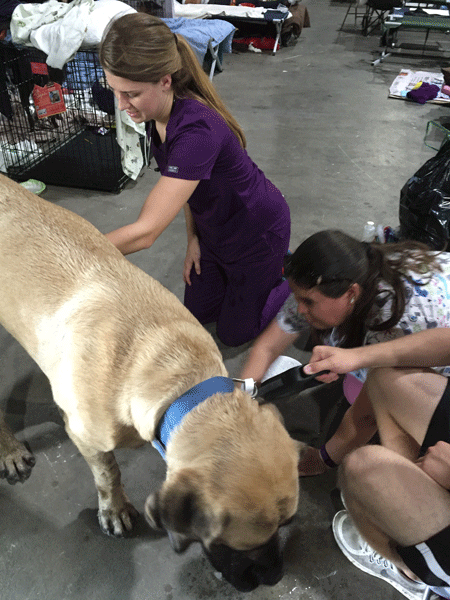
(Photo courtesy of Dr. Wolfson).
A rescued dog recieves care from veterinary volunteers from LSU. They are given food, water, shelter, medicine, and comfort, all of which have been kindly donated.
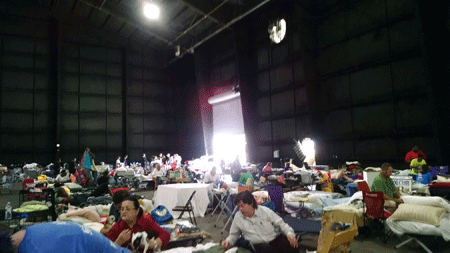
(Photo courtesy of Dr. Wolfson).
One of the many parish shelters filled with rescued people and their animals. They're given cots to sleep on as well as blankets, courtesy of the Red Cross (pictured below).
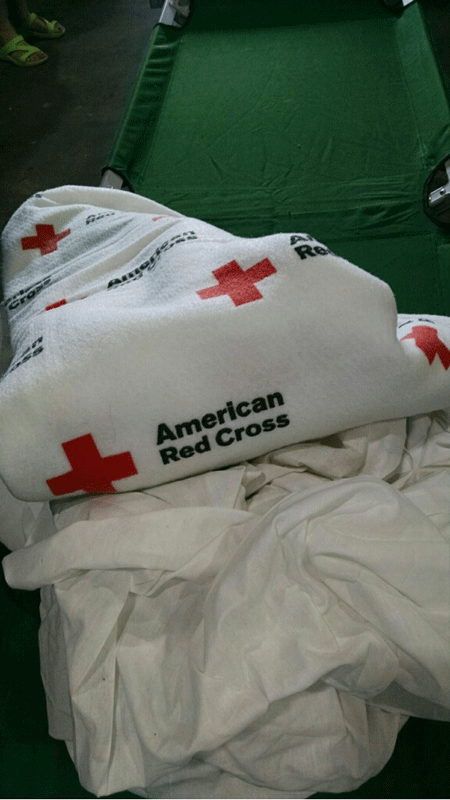
(Photo courtesy of Dr. Wolfson).
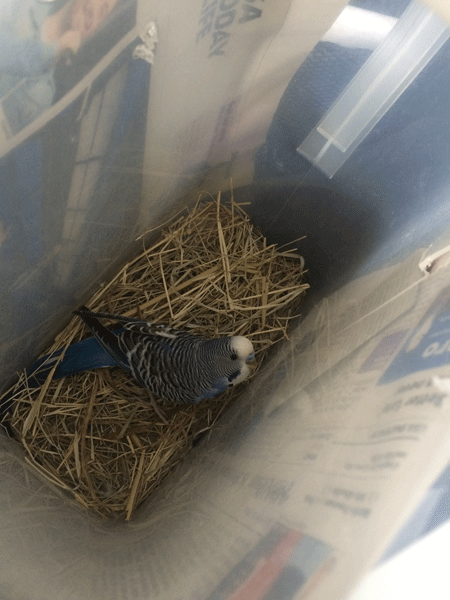
(Photo courtesy of Dr. Wolfson). One of the hundreds of rescued birds finds a temporary home at a parish shelter.
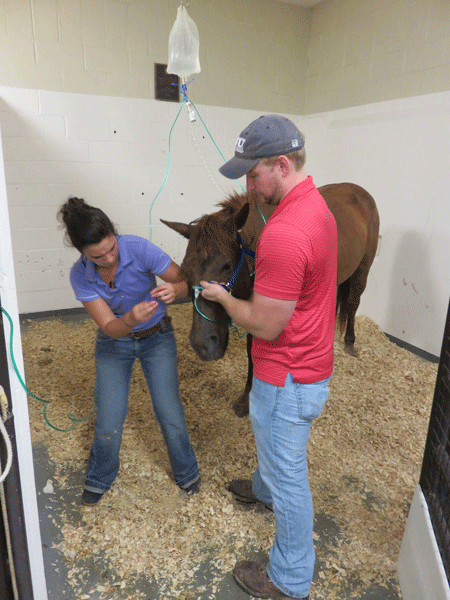
(Photo courtesy of LSU). Volunteers check a rescued horse over and tend to any injuries they may find. The rescued horses are all given food, water, shelter and medicine that has been donated by companies along with others trying to help aid in the relief efforts.